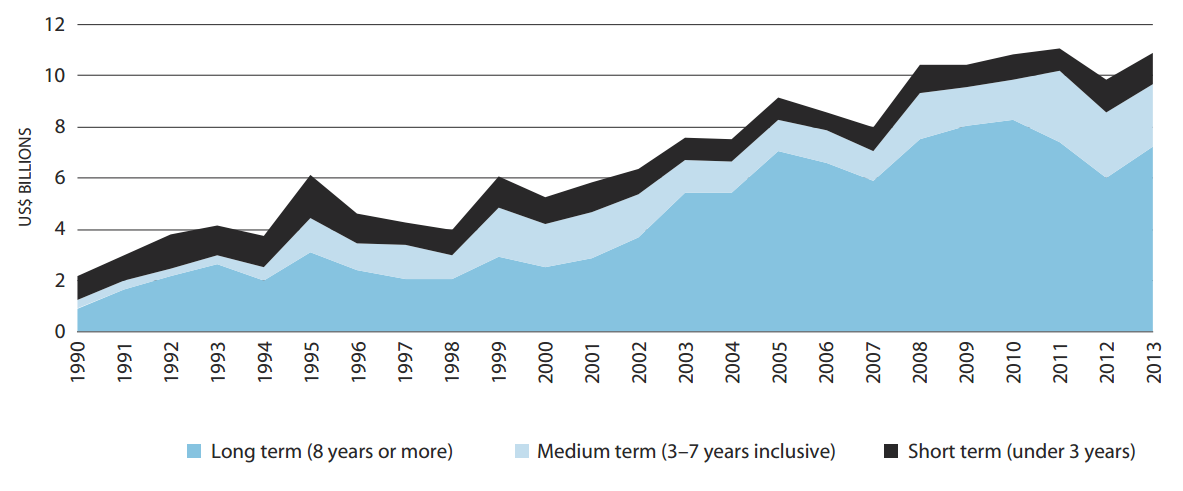Most humanitarian assistance is channelled to long-term recipients
Long, medium and short-term recipients of official humanitarian assistance from DAC donors, 1990–2013
This infographic was developed for our Global Humanitarian Assistance Report 2015
Humanitarian assistance may be required to respond quickly but it is rarely a short-term intervention. The bulk of humanitarian assistance goes to the same countries year after year because of recurrent or chronic crises; it often continues to be used to provide basic goods and services in the absence of other international or national investment.
In 2013, 66% (US$ 7.23 billion) of all humanitarian assistance from the Organisation for Economic Co-operation and Development (OECD) Development Assistance Committee (DAC) donors went to long-term recipient countries, defined as those that have received an above-average share of their official development assistance (ODA) in the form of humanitarian assistance for eight years or more between 1999 and 2013. A further 23% (US$2.46 billion) of humanitarian assistance in 2013 went to medium-term recipients, defined as those meeting the same criteria for between three and seven years.
Of the 20 largest recipients of humanitarian assistance in 2013, 19 were long- or medium-term DAC recipients. The three largest recipients of international humanitarian assistance in 2013 – Syria, Occupied Palestinian territory and Sudan – are all long-term recipients.
The fact that so much humanitarian assistance goes to long- and medium-term recipients presents a challenge to both humanitarian and development financing and emphasises the need to address the underlying causes of crises. Multi-year funding arrangements should be the norm in long-term recipient countries, with greater investments in providing more suitable and sustainable solutions to long-term crises with a closer convergence with development assistance and other international resource flows.
For more please see our Global Humanitarian Assistance Report 2015.
Notes
Long, medium or short-term classification is determined by the length of time the country has received an above-average share of its ODA in the form of humanitarian assistance. Calculations are based on shares of country-allocable humanitarian assistance.
Source Development Initiatives based on OECD DAC and UN CERF data.
Related content
Priorities for the UK’s incoming Secretary of State Alok Sharma
As Alok Sharma takes office as Secretary of State, DI's Amy Dodd sets out key priorities for the UK and its global development agenda.
From review to delivery on the Global Goals – what should the immediate priorities be for the UK government?
On 26 June, the UK government published its Voluntary National Review measuring delivery against the Global Goals - but does it accurately capture progress?
Three priorities for the High-level Political Forum 2019
DI Director of Partnerships & Engagement Carolyn Culey sets out three key priorities for closing the gap between the poorest and the rest at HLPF 2019
